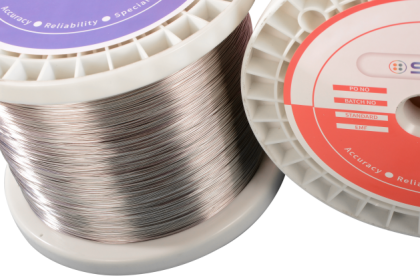1. Types
(1) You need choose the Thermocouple wire according to the type of thermocouple. Different Thermocouple wire materials have different temperature limits and errors, it is very important to choose wires with sufficient high or low temperature capabilities to meet applications.
-
Type K (Nickel-Chromium/Nickel-Alumel): -200°C to 1260°C (general-purpose, cost-effective).
-
Type J (Iron/Constantan): -40°C to 760°C (reduced sensitivity to hydrogen).
-
Type T (Copper/Constantan): -200°C to 350°C (high stability in cryogenic environments).
-
Type S (PtRh10/Pt): 0°C to 1600°C (high accuracy for calibration, aerospace, or glass manufacturing).
-
Type R (PtRh13/Pt): 0°C to 1700°C (superior oxidation resistance vs. Type S).
(2) You need choose suitable materials and protection jackets for the Thermocouple wire considering the temperature, humidity, corrosive gas and other factors in the working environment.
|
Material
|
Max Temp
|
Key Features
|
Best For
|
|
PVC
|
105°C
|
Low-cost, flexible
|
Labs, light industrial
|
|
Fiberglass
|
480°C
|
Heat-resistant, rigid
|
Ovens, boilers
|
|
PTFE (Teflon)
|
260°C
|
Chemical/moisture resistance
|
Corrosive/cleanroom environments
|
|
Ceramic Beads
|
1600°C
|
Extreme heat tolerance
|
Foundries, glass furnaces
|
|
Stainless Steel (304/316)
|
900°C
|
Corrosion resistance
|
General industrial
|
|
Inconel
|
1150°C
|
Oxidation/corrosion resistance
|
Aerospace, chemical plants
|
(3) You can choose shielded wire to reduce interference if the measurement is working environment with strong electromagnetic interference
2. Installation
(1) The two ends of Thermocouple wire should be as close as possible,you need try to keep the temperature of the two ends and the connections with other two instruments wiring ends are the same. Also, if the instrumentation cabinet with a fan, we should avoid fan blowing directly on the connection point.
(2) Because the signal generated by the thermocouple is very weak for the microvolt level. If distance for using is too long, the signal transmission attenuation and environmental interference in the strong electric couplingare enough to make the thermocouple signal distortion, causing the inaccuracy measurement and control the temperature fluctuations. According to experience, the length of Thermocouple wire should be controlled below 15m, if it exceeds 15m, it is recommended to use temperature transmitter for signal transmission. Temperature transmitter convert the potential value corresponding to the temperature into DC current transmission,withstrong anti-interference.
(3) Thermocouple wire wiring must be far away from the power line and interference sources in order to avoid having to cross, but also as far as possible to use the cross interchangeable way, please do not use parallel laying.
(4) The positive and negative of the Thermocouple wire must be opposite to the positive and negative poles of the thermocouple. Otherwise it will not only fail to compensate for the role, which will also cause larger resulting error, sowe must pay attention to the polarity of the connection.
(5) In the precision measurement, when we use Thermocouple wire , the measurement results must be added to the correction value of the Thermocouple wire .
We always work with our partners and customers on how to choose the right Thermocouple wire . Please contact us if you have any questions , our professional team of engineers will be glad to answer your any questions.






 IPv6 network supported
IPv6 network supported